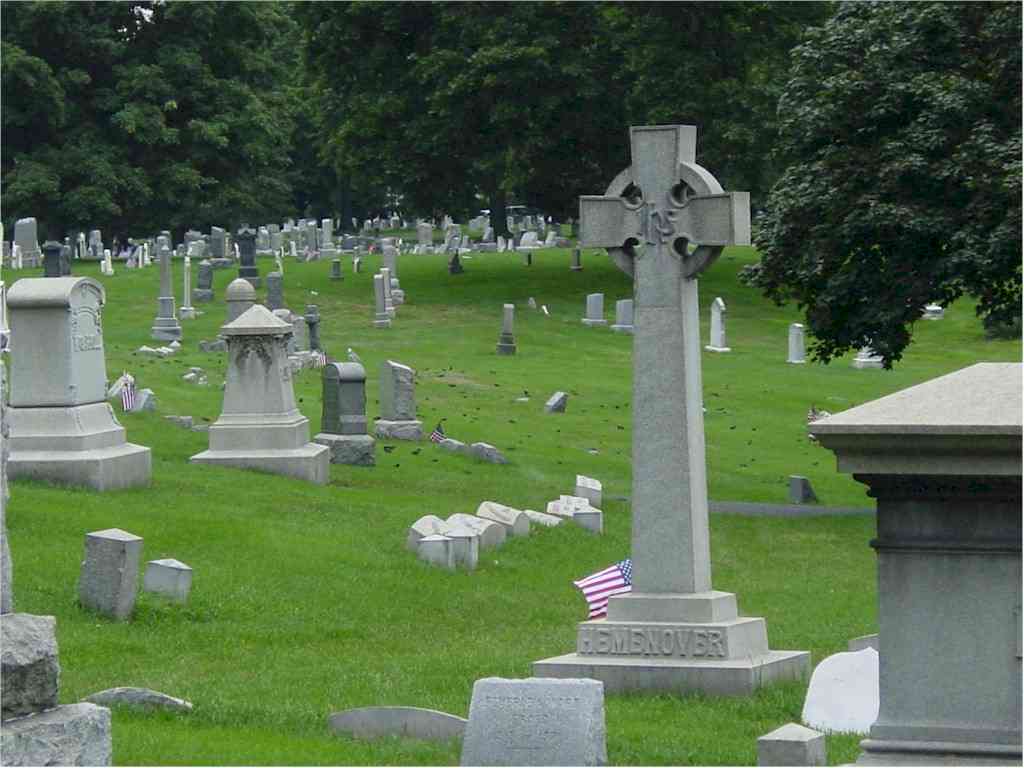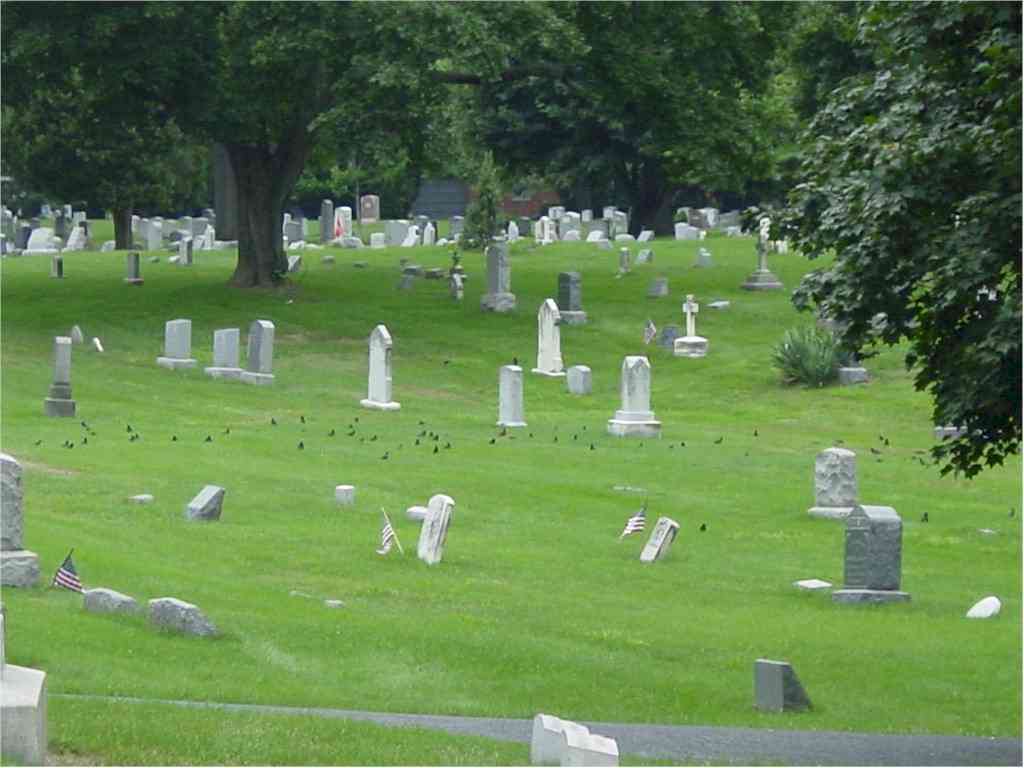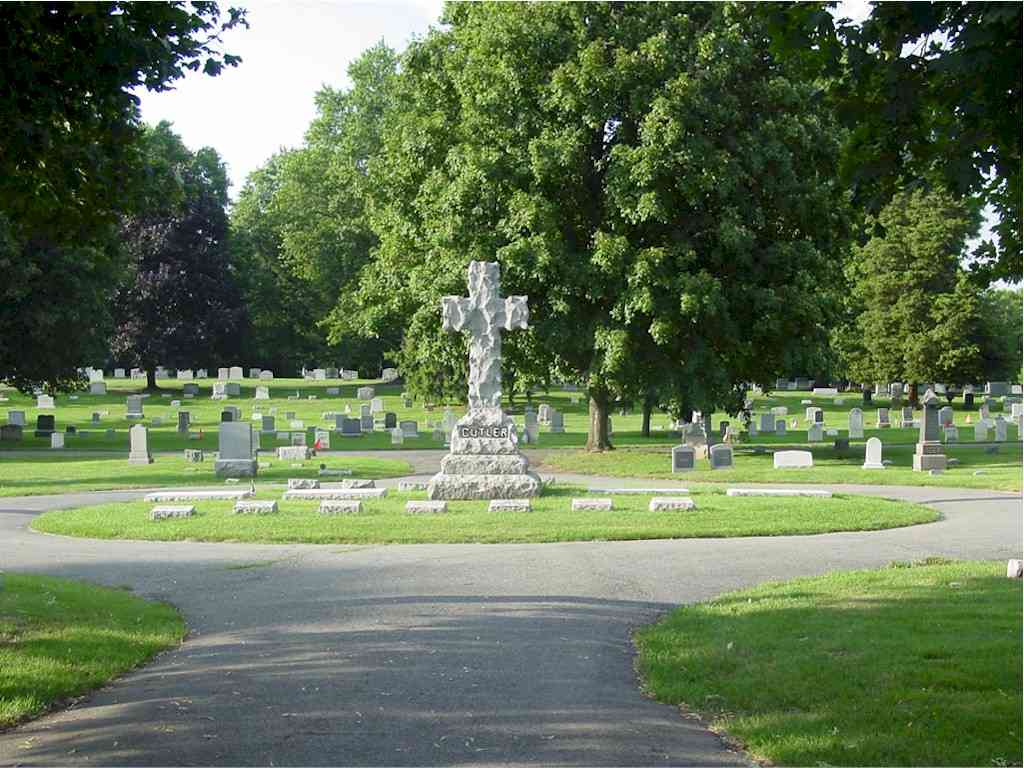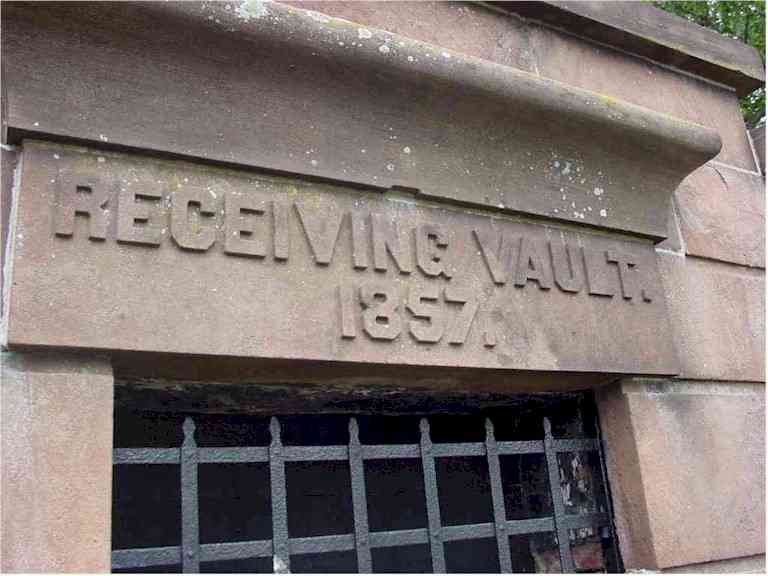A Rock-Solid Immortality
Evergreen CemeteryHe who rejects change is the architect of decay. The only human institution which rejects progress is the cemetery. - Harold Wilson
Evergreen Cemetery vista. The cemetery is located at 65 Martin Luther King Drive, Morristown, New Jersey. HistoryThe Evergreen Cemetery Trustees have donated to our church library a copy of The Silent Procession: A History of the Evergreen Cemetery, authored by James Elliott Lindsley. Reverend Lindsley is a member of the Lindsley family who were among the earliest settlers in the Morristown area. We believe that his account of the founding of the Evergreen Cemetery in 1855 will be of interest to all who care about local history. Of particular interest to our United Methodist congregation is the account of one of the founders of the cemetery, George T Cobb, who was also a member and trustee of our church in 1853. Mr Cobb was also Morristown’s first mayor, and President of the Morristown Board of Education (the Morristown High School yearbook continues to be named the Cobbonian in his honour). He served two terms in the NJ State Senate and was elected a representative to Congress as a Democrat, but supported Lincoln when he became President, and thereafter was a Republican. He amassed a considerable fortune in the iron business in New York. It was George T Cobb who donated the land for our present church site, and it was Mr Cobb who additionally gave two dollars for every dollar contributed by our congregation for the construction of the building. Mr Cobb’s ambition was that the Methodists have the largest and handsomest church in Morristown. The 1,100-seat church would be constructed of a unique purple base conglomerate or "puddingstone" gathered from a farm on nearby Horse Hill Road in Cedar Knolls. The spire would be 150 feet high, topped with a granite cross. It would take four years and $150,000 to complete the work. At the same time, it was George Cobb’s vision and generosity to create and finance a new park-like cemetery for Morristown, to be known as Evergreen Cemetery. He was the president of the cemetery trustees in 1855. At that time, the Methodist Church had a cemetery located on Bank Street near the corner of Ann Street in Morristown. In 1888 the Methodist church cemetery was closed and the remains of all buried there were removed to Evergreen Cemetery. A monument at Evergreen recognises this happening. Therefore, it was not by a coincidence that the purple puddingstone that went into the construction of our third church in 1866 is also the same puddingstone that was used for the construction of the purple puddingstone wall fencing surrounding Evergreen Cemetery. After the disastrous fire of 1972 and the reconstruction in 1974, additional puddingstone was needed to complete our church building. Ironically, it was the Evergreen Cemetery trustees who generously donated to the Methodist Church their cemetery’s \ puddingstone wall that originally fronted on Ridgedale Avenue. Glenn K Coutts, President MUMC Trustee Source: www.morristownumc.com/webspire1-17.pdf\
To me, it is curious that the graves face in different directions in different sections.
This plot appears to be the cemetery's centerpiece (completely encircled by a road). It is the final resting place of the Cutler family.
The receiving vault allowed bodies to be stored during the winter - until the ground thawed and gravediggers could do their work.
In all there are 11 pages of photographs of some of the unusual features to be found in Morristown's Evergreen Cemetery. See the New Jersey section for seven pages and the Photographs section for the other four.
For more articles on New Jersey including facts, census data, complex highway interchanges, photos, transit plans, politicians, geology, canals, regions, governance, flora and
fauna click the "Up" button below to take you to the Table of Contents for this section. |
 Animals
Animals Animation
Animation Art of Playing Cards
Art of Playing Cards Drugs
Drugs Education
Education Environment
Environment Flying
Flying History
History Humour
Humour Immigration
Immigration Info/Tech
Info/Tech Intellectual/Entertaining
Intellectual/Entertaining Lifestyles
Lifestyles Men
Men Money/Politics/Law
Money/Politics/Law New Jersey
New Jersey Odds and Oddities
Odds and Oddities Older & Under
Older & Under Photography
Photography Prisons
Prisons Relationships
Relationships Science
Science Social/Cultural
Social/Cultural Terrorism
Terrorism Wellington
Wellington Working
Working Zero Return Investment
Zero Return Investment


